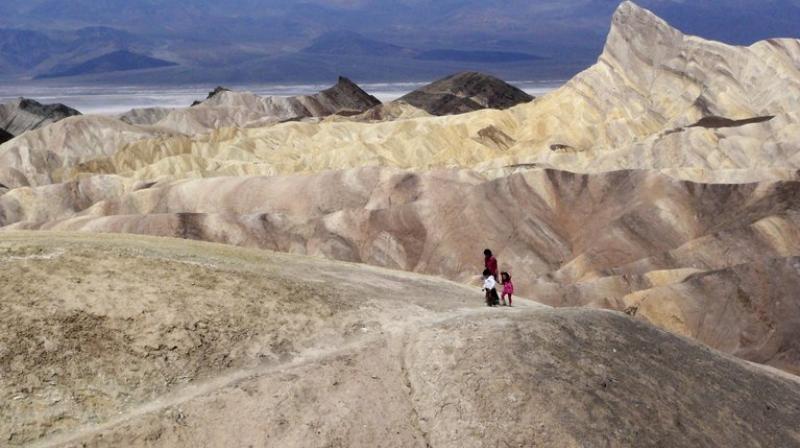Death Valley sees hottest month, sets world record

The natural furnace of California’s Death Valley was on full broil in July, tentatively setting a world record for hottest month ever.
The month’s average temperature was 108.1 degrees (42.28 Celsius), said Todd Lericos, a meteorologist in the Las Vegas office of the National Weather Service.
That roasted the previous record, set in Death Valley in July 2017 when the average was 107.4 degrees (41.89 Celsius).
“It eclipsed the record by quite a bit,” Lericos said, adding that the data is considered preliminary and needs to be reviewed before it goes into official record books.
The temperatures are measured at Furnace Creek in Death Valley National Park, a vast, austere and rugged landscape in the desert of southeastern California that includes Badwater Basin, which at 282 feet (85.9 meters) below sea level is the lowest point in North America.
The valley got its morbid name from a group of pioneers who got lost there in 1849-1850 and thought it would be the end, according to the National Park Service. Only one died, however, before they found their way out.
Summer heat is so routinely extreme that tourists are warned to drink at least a gallon (4 liters) of water each day, carry additional water in their cars, stay close to their vehicles and watch themselves and others for dizziness, nausea and other symptoms of potentially deadly heat illness.
Visitors are urged to “travel prepared to survive,” avoid hiking at low elevations and return to their air-conditioned cars for a cool-down after just 10 to 15 minutes of exposure outdoors.
And amid the heat, thunderstorms bring the threat of flash floods.
The location holds the world record for highest temperature ever recorded — 134 degrees (56.67 Celsius) — set on July 10, 1913.
Even with that history, July was exceptional as a weather pattern stoked temperatures.
A very persistent high-pressure system set up over the Southwest, restricting the movement of air vertically in the atmosphere and creating a heat wave, Lericos said. “It was fairly intense for this time of year,” he said.
Among the extreme conditions were four consecutive days reaching a high of 127 degrees (52.7 Celsius) and overnight lows that remained over the century mark.
Click on Deccan Chronicle Technology and Science for the latest news and reviews. Follow us on Facebook, Twitter.

